ZIP WALK & TALK IN 53207
On March 18, 2017, a dozen strangers became neighbors. We gathered in the Community Room at the Tippecanoe Library on Howard & Howell, ready to explore the area between the library and Humboldt Park to the north for the second official ZIP Walk & Talk (last November, ZIP MKE held its first ZIP Walk in the Merrill Park, Pigsville, Story Hill, and Johnson's Wood neighborhoods, but it was so chilly and windy, everyone just wanted to get back to their cars and head home!). But since part of its mission includes community engagement, ZIP MKE wanted to make sure that the Talk part was an integral component to any further Walks .
Walkers came for different reasons:
to explore a neighborhood that I haven’t really explored yet
to walk through and see a different part of the city
to check out the community in the Bay View area
to learn the neighborhood
to support the library
to enjoy the weather
to explore our city
to meet people
I was invited.
I came with my mom.
I love walking.
And they came with different expectations:
to enjoy a neighborhood on foot
to see new things and take photos of them
to meet new people
to see landscapes I’ve never seen before
to get to know more of Milwaukee and people in the area
- to get some great photos
But what most of the walkers were expecting is that we'd all walk in a group on a pre-prescribed route. So when I announced that I wanted them to pair up with someone they didn't know, I could sense the apprehension on some faces. Nonetheless, everyone complied with my experiment and received a clipboard, area map, and a Sharpie with which, I explained, they would delineate their own beat through the neighborhood, placing dots on the map at places that caught their interest, attention, surprise, questions. Along the way, the pairs were to get to know each other and, of course, take photographs. The six groups would converge in about an hour at the entrance to Redcat Field at Bay View High School, on the north end of Humboldt Park, at which point we would all walk back together.
This exercise gave each pair a chance to explore with no tour guide (whether human or book) and no pre-planned route. Instead, it gave them freedom to explore with an open mind, to get from point A to point B with an eye for discovery and connection--a luxury most of us don't afford ourselves often enough in the world of GPS and Google Maps. This particular design was inspired by my recent reading about the Surrealists (1920s), the Situationist International (1950s-70s), and the Fluxus movement (1962-78). When I discovered these three movements, I immediately threw out my plan for a group walk, a simple one that formed a right triangle between Tippecanoe, Humboldt Park, Woodlawn Cemetery, and back to Tippecanoe. Uninspired. Yawn.
The Surrealists explored the relationship created between themselves as walkers and their urban environment (Paris), chance, and the marvelous. Their peripatetic practice was partly a reaction to the rigidly prescribed grid system of the city and the increased auto traffic of the 1920s, which made the enchantment of walking the streets of Paris a little more dangerous. They eschewed familiar routes and popular landmarks to explore forgotten or unfashionable places. They walked to walk, to bring back an age-old (we are Homo erectus, yes? (Wo)man the Walker?) practice. They walked to escape boredom and connect with their surroundings. They walked to explore their own unconscious, to discover themselves.
The Situationists were less about searching for Self and more about seeking social change. Like the Surrealists, they defied the dominant order and walked where they pleased, but their walks--called dérives--didn't just explore. They studied, critiqued, and sought to alter what they saw as an increasingly alienating city. The dérivistes played walking games (e.g., walking a route in a circle rather than in a square, mapped grid; following scents or colors throughout the city, not knowing where they would take them), raised questions about how minorities and women were limited as travelers in their own city, studied the city's "psychogeographic contours."
The Fluxus movement, as an international collective of artists, built upon the previous two by attending to the quotidian (this is my new favorite word, meaning "daily" or "commonplace") stuff of life, finding inspiration and amusement in the often overlooked. Influenced partly by musician John Cage, they likened their walks to mushroom hunting (I loved this metaphor, too, because I spent most summers/autumns of my childhood in the mountains with my family, foraging for mushrooms, bracket fungus, and warabe, or fiddlehead ferns). Mushroom hunting, for them, was the epitome of finding things by chance, dealing with boredom, and, most of all, paying close attention to details.
Here are photos from two of the pairs. Pay attention. What resonates with you personally? What questions do the photos raise? What quotidian details do you notice? What might be the psychogeographic contours of 53207, based on what you observe?
Photos by Scott Margelofsky
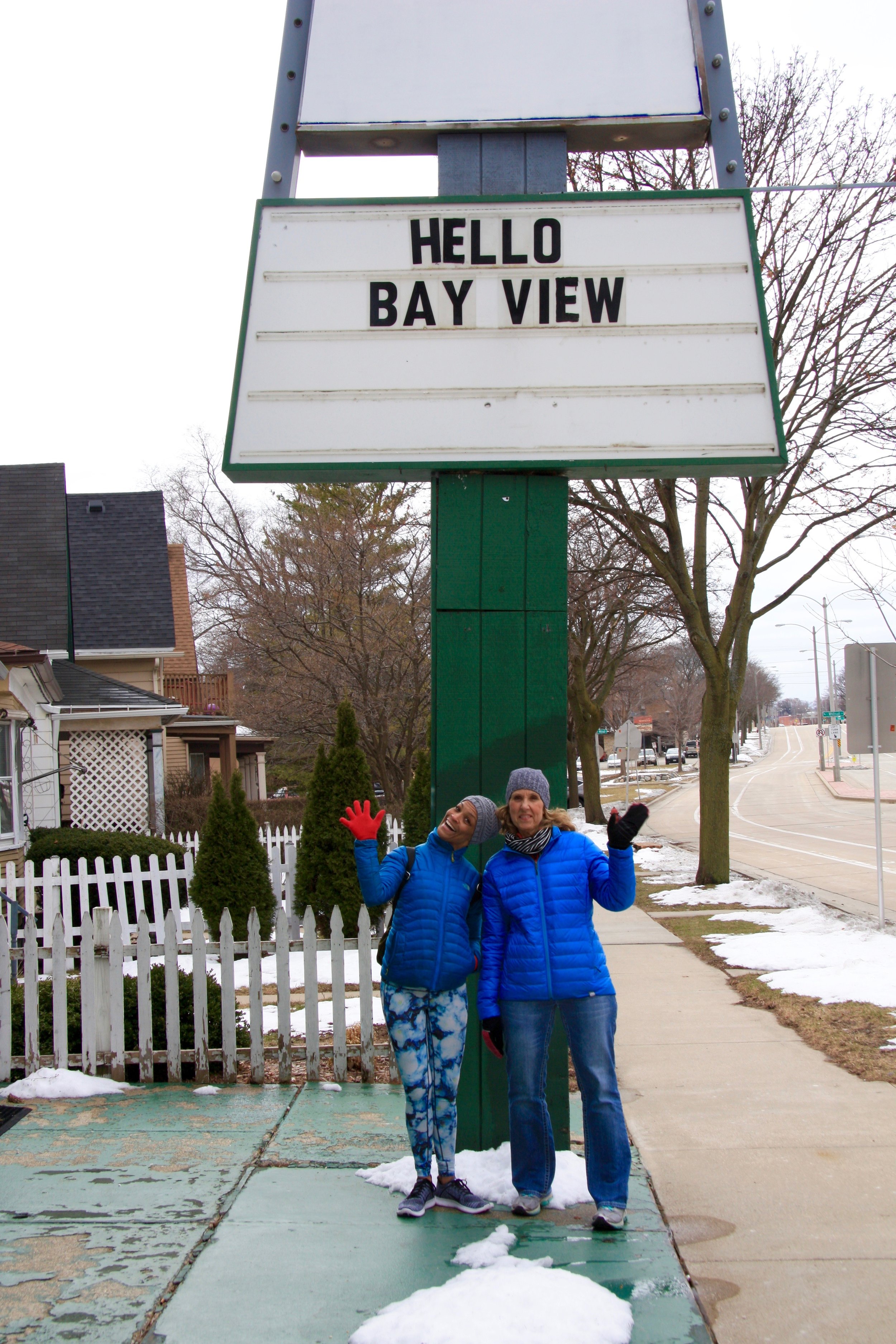
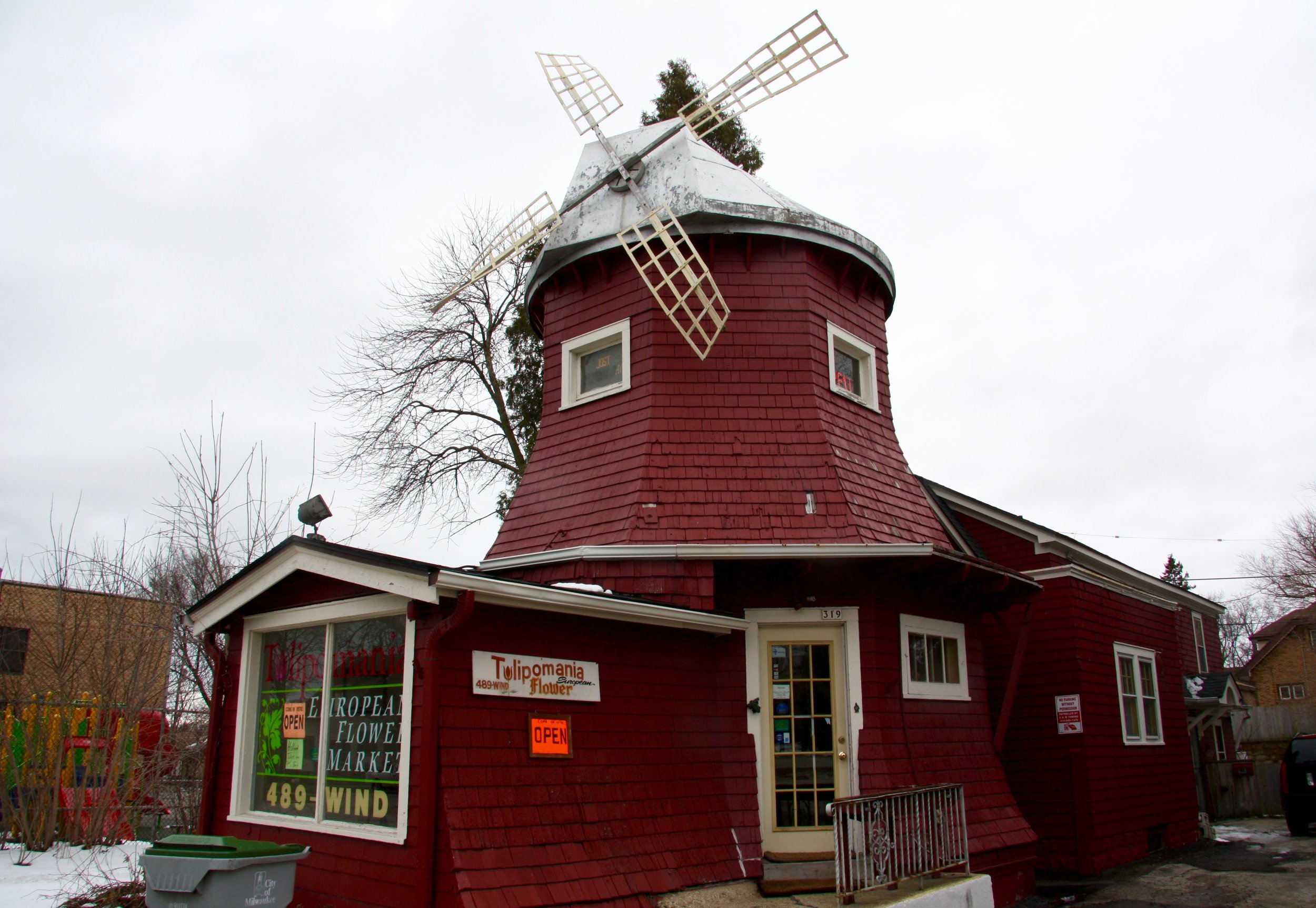
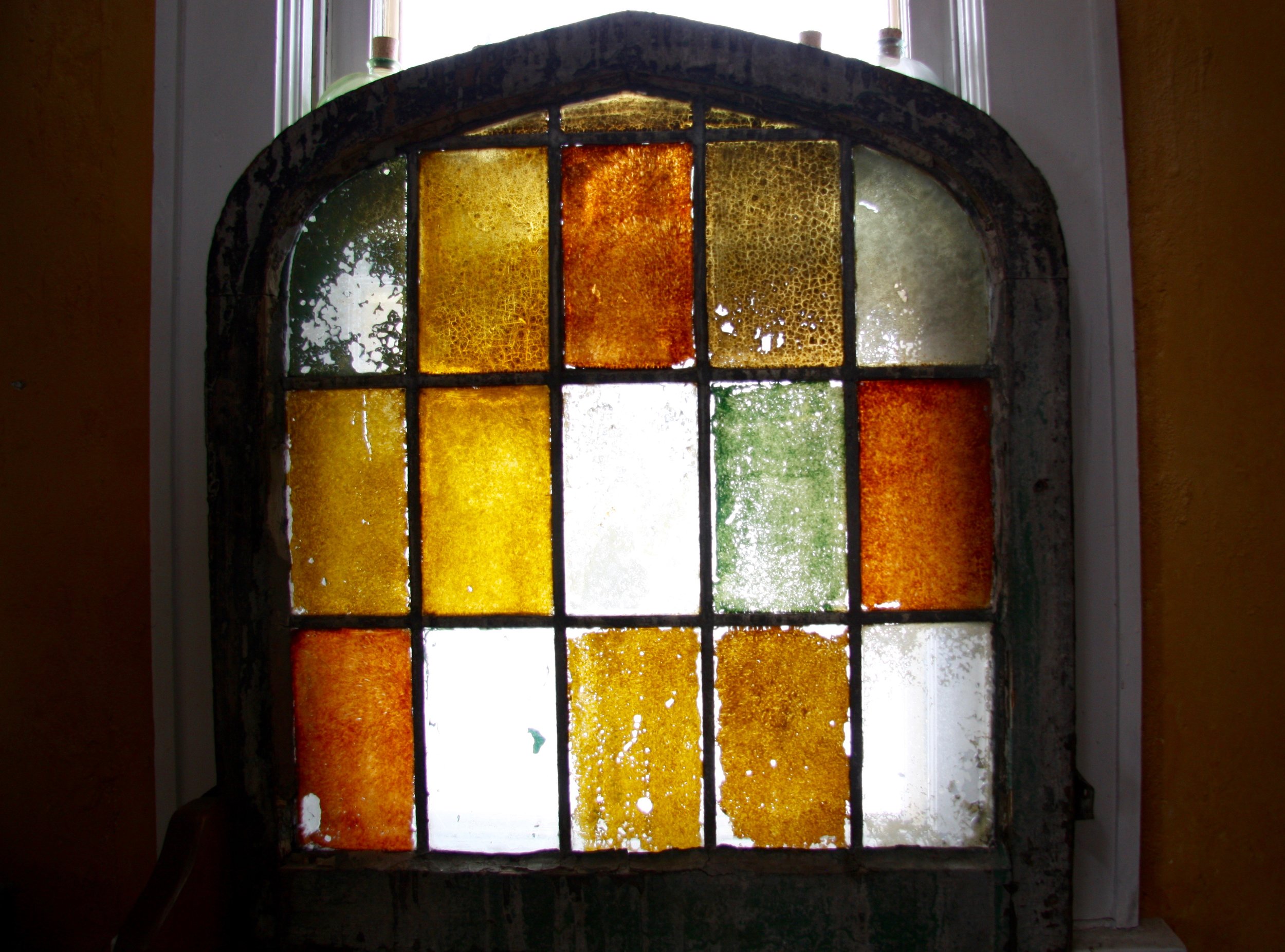
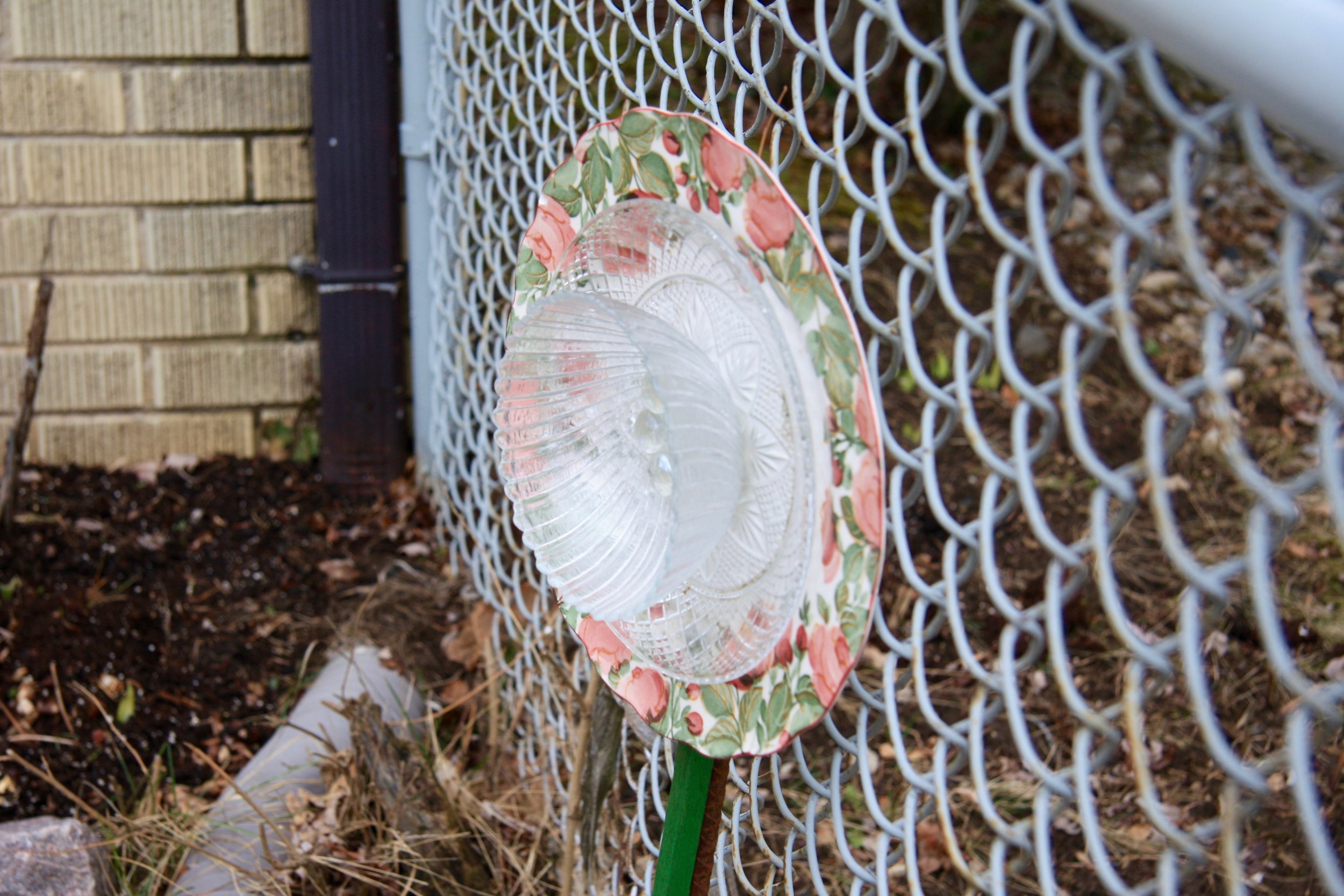
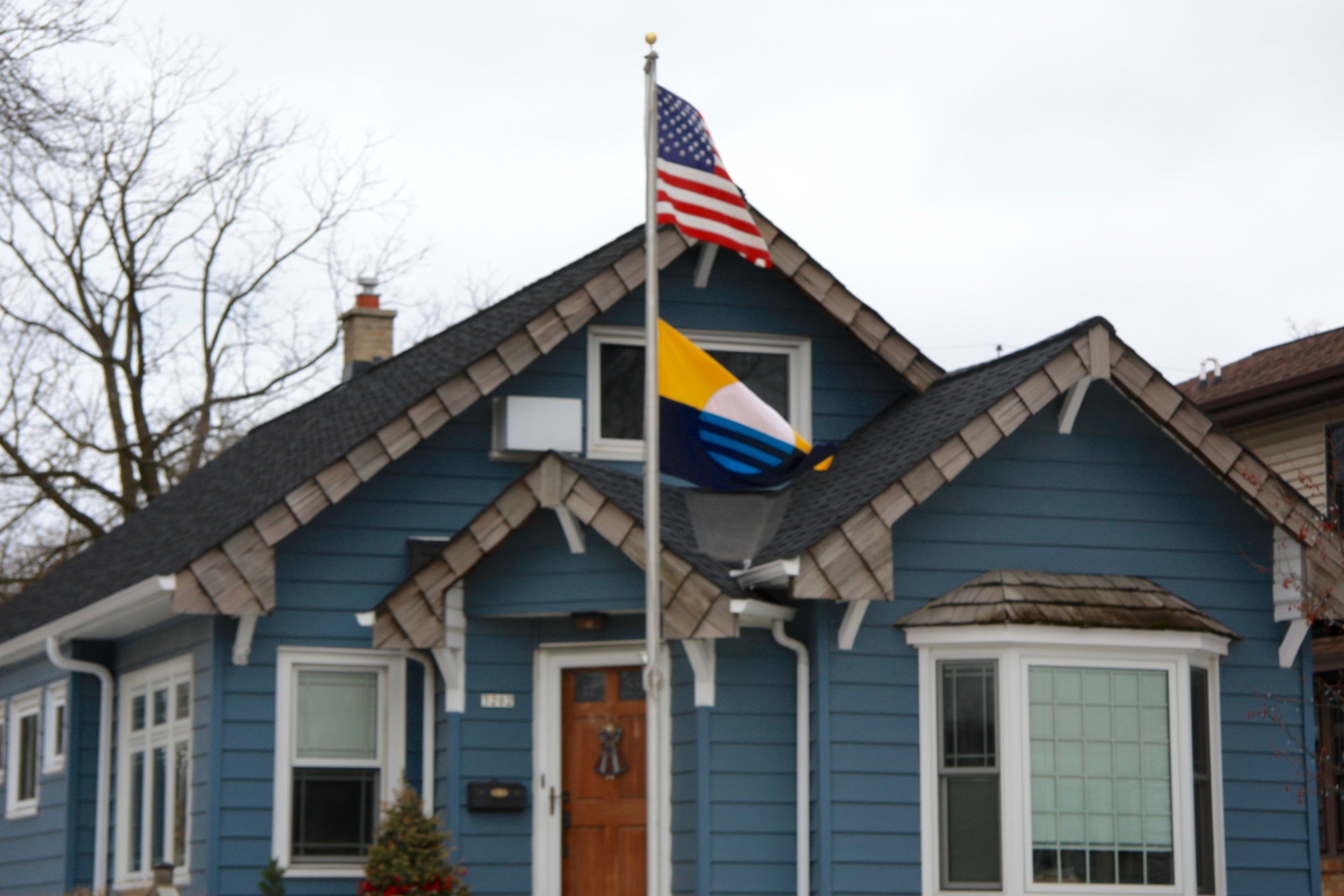
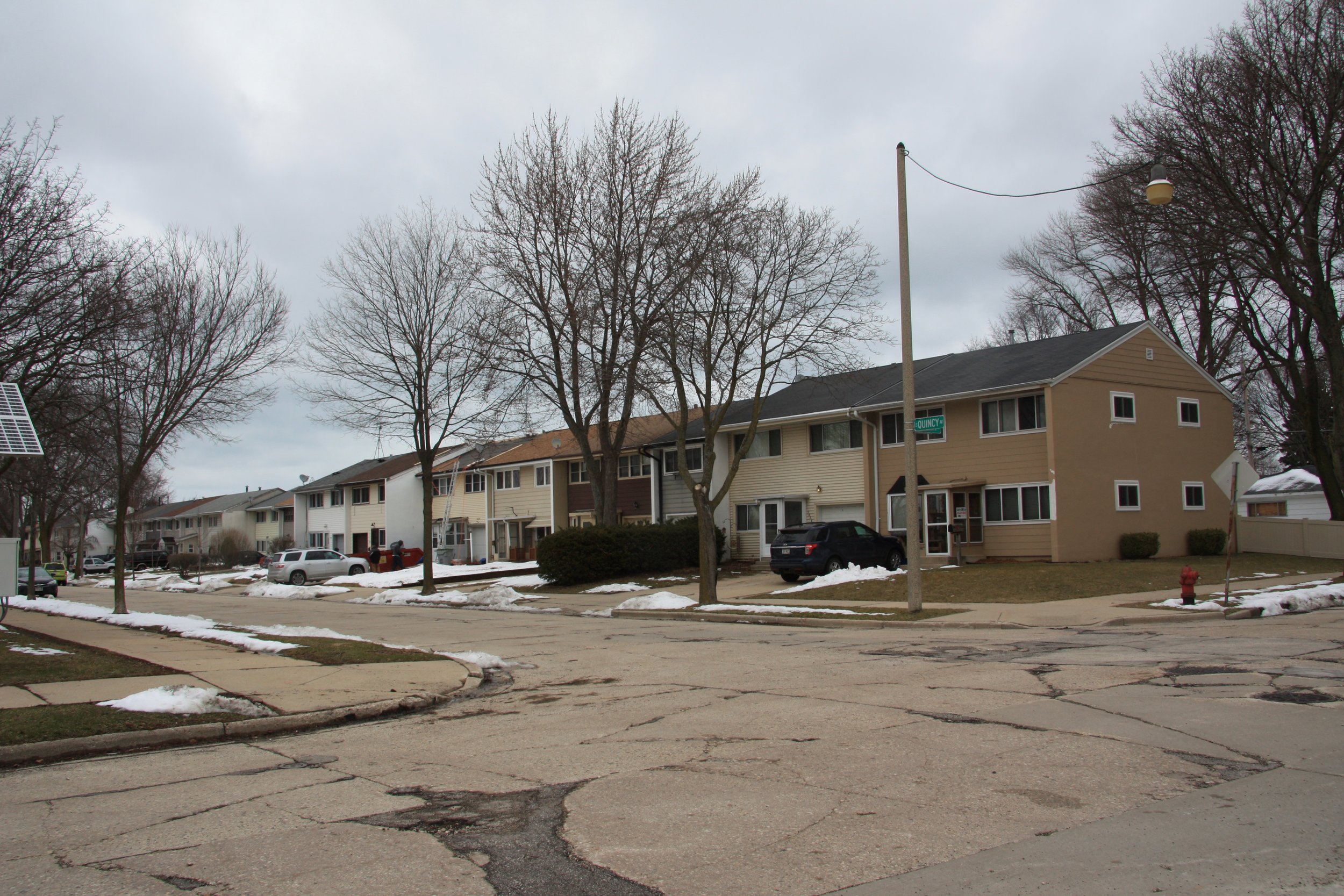
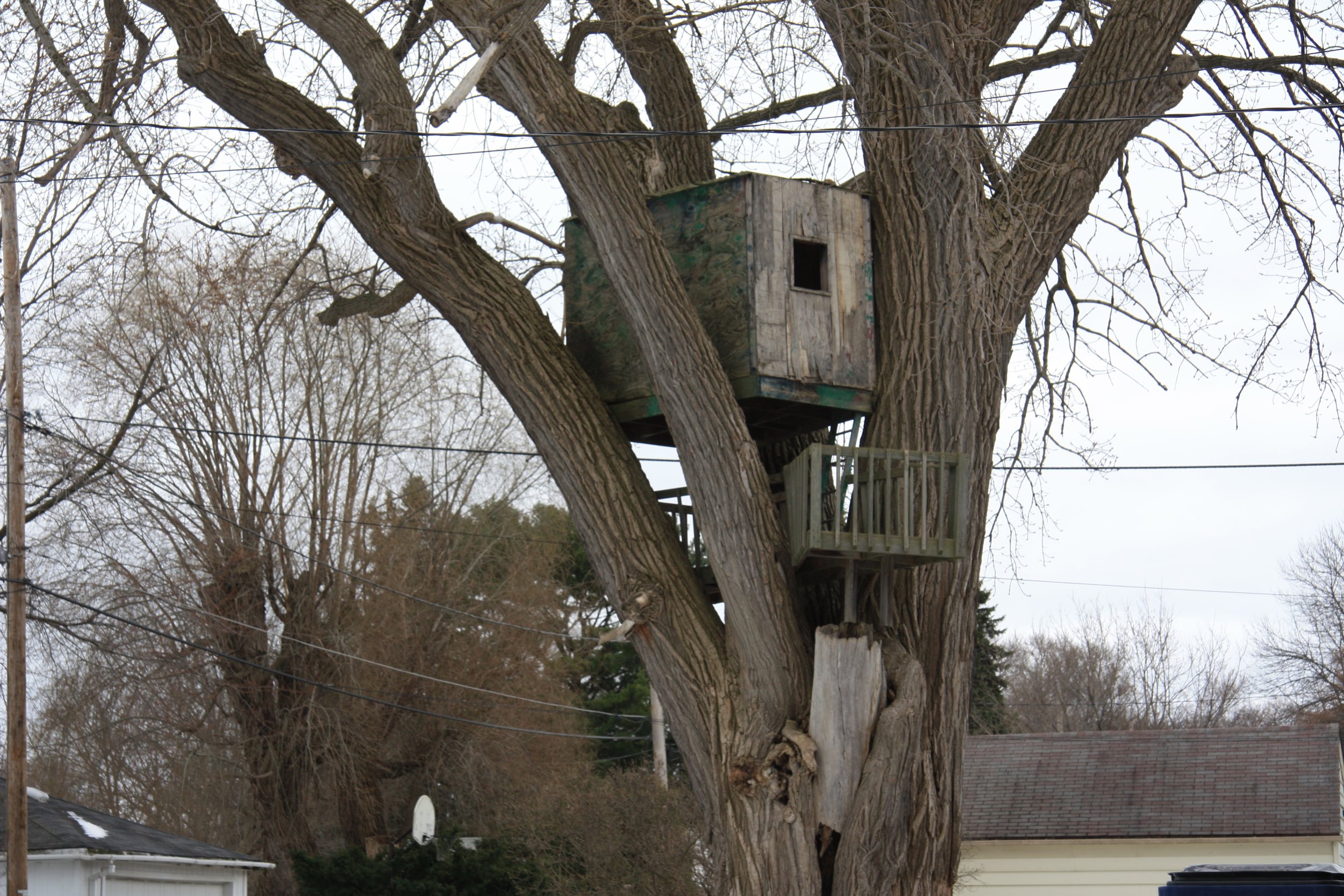
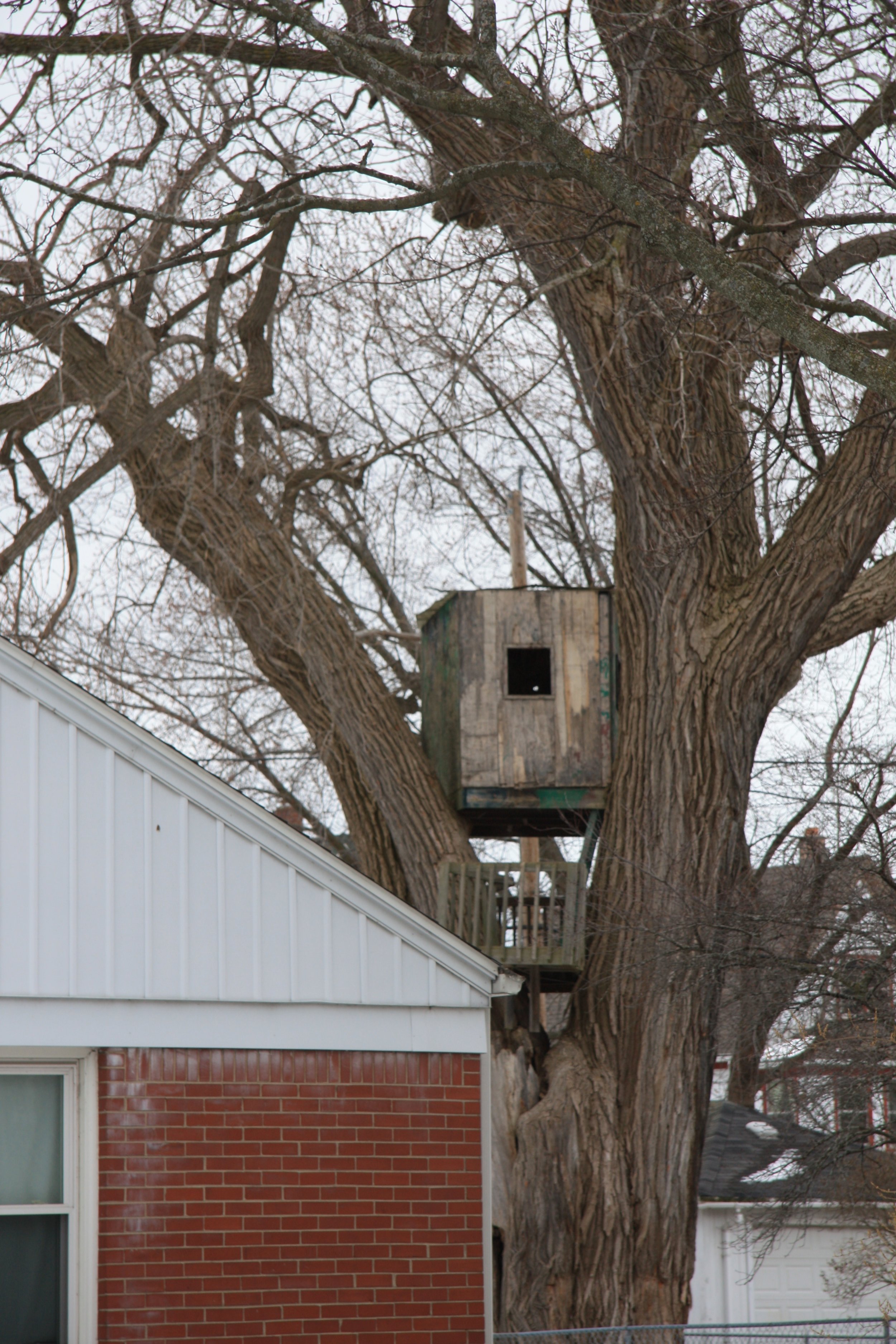

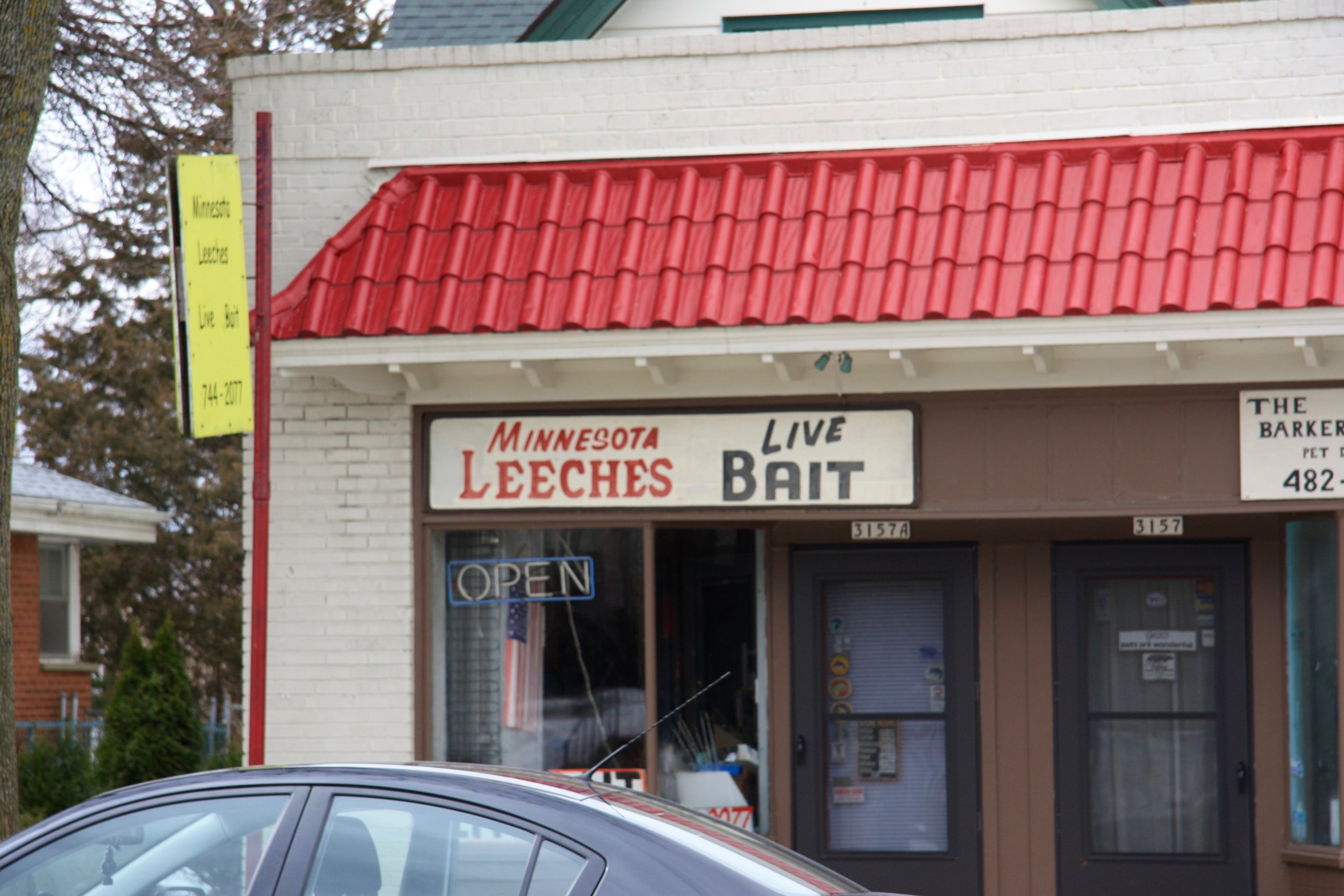

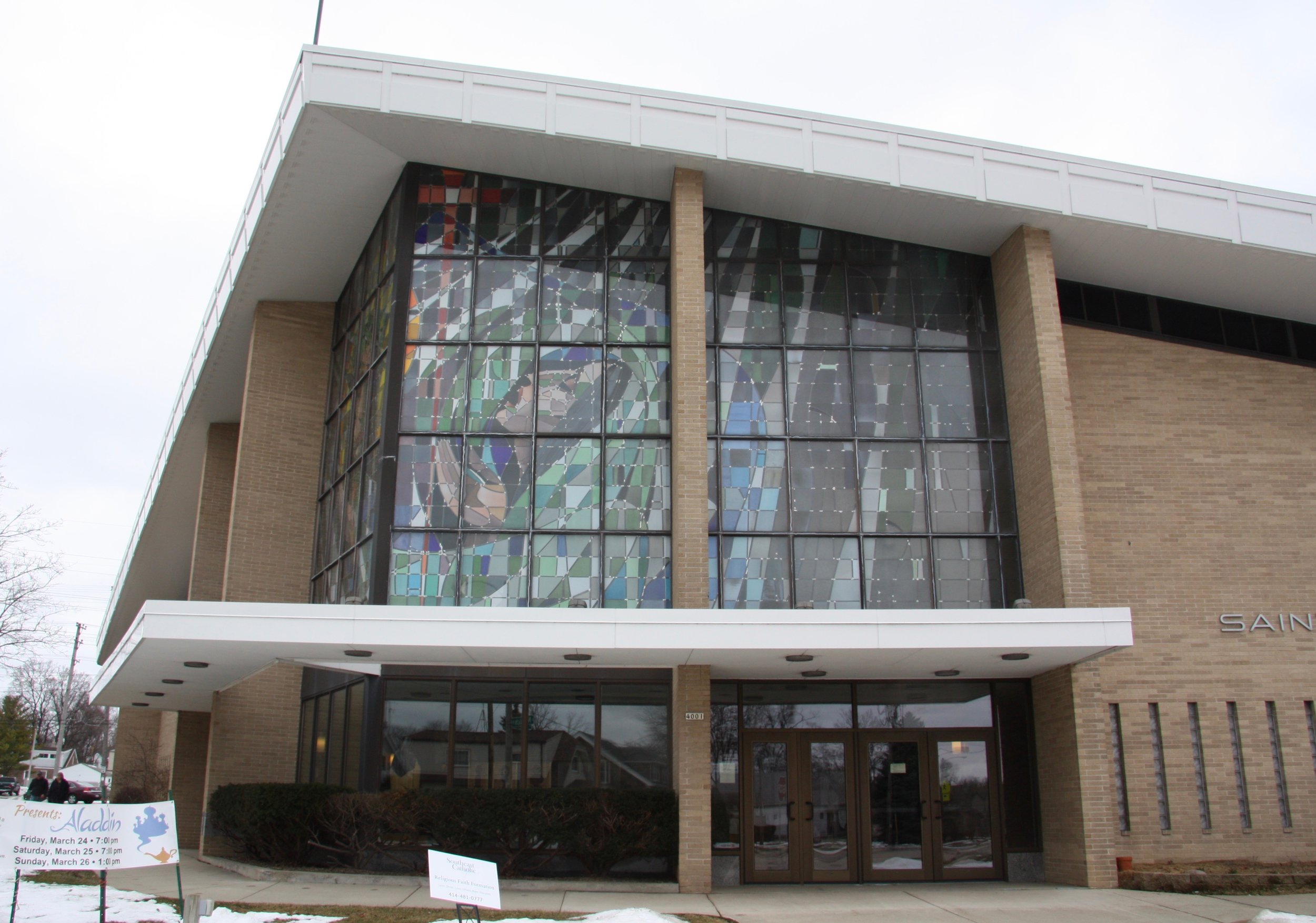
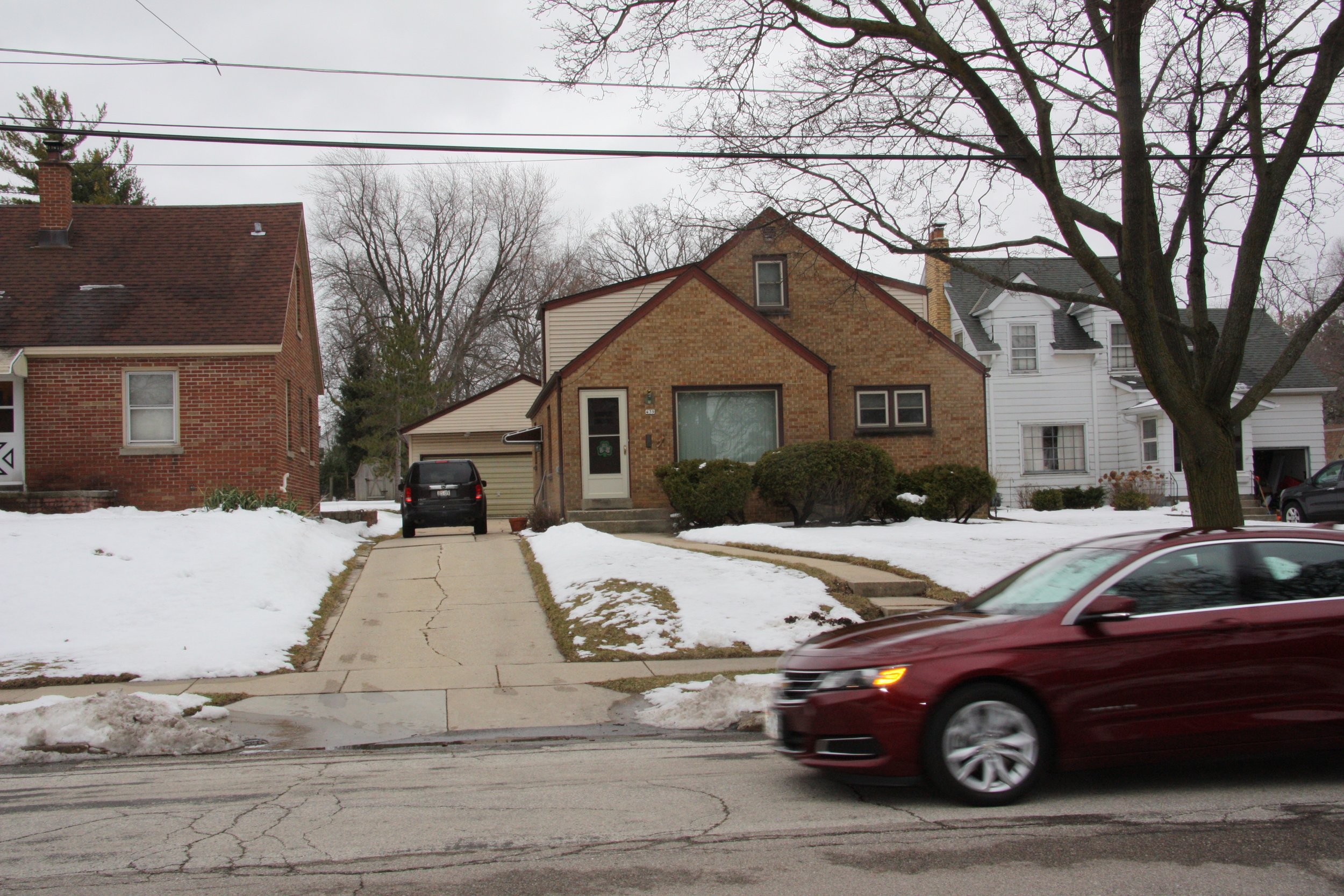
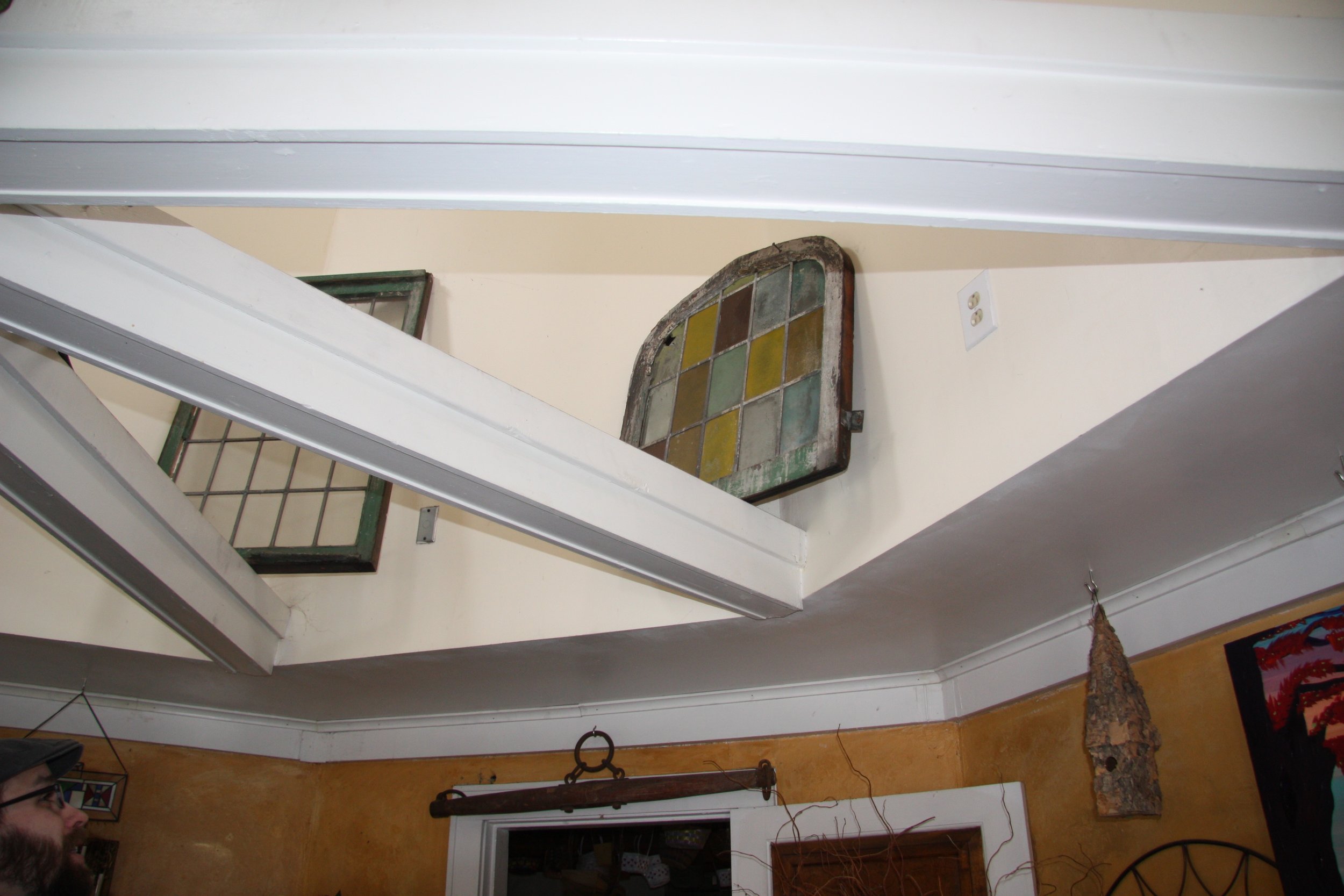
Photos by Janeen Kagel





































































































When we returned to the library--about 7 miles later--we enjoyed a light lunch together and compared notes and reflections.
First, what did we OBSERVE about the neighborhood? In other words, what EVIDENCE did we collect?
a wide variety of modest-sized homes with unique shapes/styles from different eras (very few houses looked the same, e.g., no long blocks of only, say, bungalows)
lots of colorful doors and houses
lots of decorative elements
fairy doors on trees
awnings with the last name initial on them (a remnant from a bygone era)
lots of established small businesses (many storefronts built in front of homes) and lots of new growth (e.g., at Tulipomania, one pair talked to the owner for a little while and learned that she had taken over from the previous owner about 10 years ago. She has old windows from The Pfister Hotel, art from a local artist, exhibits each year at Art in Bloom at the Milwaukee Art Museum, etc.)
a lack of pedestrians (on this day)
utilizing of old spaces for new purposes (e.g., garage in alley with a patio built on top)
an old tree house
two big white dogs on fake grass lawn
clean streets, homes, and yards
quiet
convenience (e.g., Howell as a main thoroughfare)
lack of political sign (other than a few union signs)
Second, given these pieces of evidence, what could we hypothesize about the neighborhood?
established middle class
it's a “time capsule” of a developing neighborhood (given the variety of homes from different eras)
a sense of community pride and even trust (e.g., having lots of lawn ornaments means that you trust neighbors/others to not steal them)
Finally, what questions still lingered?
Who actually lives here? What is the socioeconomic, age, gender, racial, etc., demographic?
How involved in their community are they?
I loved that one of the walkers used the word "evidence" to describe what she had seen. We had, in fact, investigated dozens of blocks and miles of streets, gathering clues that we might have never discovered had we been whizzing in a car north on Howell, bypassing the daily life of the neighborhood on a bike, or--and this was mostly the case--living in a different ZIP Code.
So what? We walked through a neighborhood. We collected data. We took photographs. We met strangers, ate together, and talked. The words of the walkers says it all:
EDMUND: I liked getting my energy out. I liked going on a big walk. I liked eating at the end. I liked trying to map out the whole place and thinking about different ways to get to different places. It’s interesting that we found a scavenger hunt fairy house. It had a mushroom by it and a door with words at the top. It said something like ‘fairies hush’, like the fairies were sleeping. It was fun in every way.
SUSAN: I pretty much welcome any excuse for a long walk with a destination and the Tippecanoe Library in the 53207 zip code, being a novel location to me, made today even more intriguing. There was a lot of mention of how much more one sees walking as opposed to driving. I walk a lot and often don’t stop to look at what is going on around me. Pairing up with a walking companion and physically mapping our route while we conversed about our surroundings, provided an engaging framework to explore this segment of our city. Along the way we took many opportunities to stop and talk about the big and little things that caught our eye only because we allowed ourselves the time to do so.
TRACY: As always were on a rush to go from point A to point B with blinders on. I felt this as an opportunity to explore the 53207 zip code myself and get to meet others. And this event fulfilled that opportunity. Not only did I meet new people but I also had the chance to take time for myself to see the neighborhood up close and personal. I got to see evidence of the neighborhoods personality and who lives there. I am eager to go on the next zip walk and explore new neighborhoods and meet more friends.
TONIEH: I walk and bike a lot, but usually only in my own neighborhood. It was fascinating to walk through another part of town and to imagine what life would be like to live there. In my work with bicycle and pedestrian advocacy, I saw so much evidence of why we need to keep fighting to make streets safer. Seeing people connect IN PERSON is so important. I also valued much of the neighborhood I have not previously seen--usually I'm only in 53207 to go to Target or Humboldt Park! I loved the variety of houses, and I loved our discussion of architecture and history along the way. Finally, I REALLY liked our discussion after the walk. I was sorry to miss the intro, but I liked hearing different perspectives. I also appreciated that this was accessible for kids (and EDMUND HAS SUCH A GOOD EYE AND SO MANY INSIGHTS PLEASE BRING HIM EVERY TIME).I will definitely do more ZIP walks, and encourage others to do the same!!
MARYJo: There are many areas in the city that I have never explored & 53207 is definitely one of those. You started out saying it would be a different experience than what we might have thought & to be honest, I was not that excited at first. What a great experience though!! I had such a nice time meeting my partner Tania and exploring the neighborhoods in 53207. I especially liked our talk at the end as well. It was very interesting to hear everyone's thoughts about the neighborhoods they had explored. If it weren't for the zip MKE project, I'm not sure if I would have gotten over to that area.
TONI: The walk and talk was a great experience for me for a couple reasons.
Personally for me it's good to get out of my comfort zone. The approach you have to the walk and then the talk encourages people to think in new ways, see things from a different vantage point, and understand how others may interpret beauty or community in similar and in different ways than you yourself do. The walk and discussion challenged me to look at things differently.
Physically walking in a neighborhood you really do see a lot more than just driving it, as we all discussed. It's just a more intimate way to be connected to a neighborhood. Noticing the unique things of this neighborhood--modest homes, pride evidenced by the well-kept streets, lawn decorations, the fairy houses-- having the discussion around our experience made me feel more connected to the community even though I'm not living in it. And it was good to get out and be active in the middle of a bleak winter.
Stay tuned for more information about the upcoming ZIP Walk & Talk in 53223/53218 on Saturday, April 15th, 1:30pm-4:00pm!
--by Dominic Inouye

